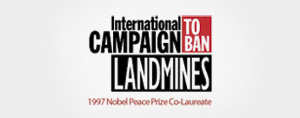22 November 2011
Press Release - Landmine Monitor 2011
Record levels of funding and mine clearance, but also increased use of landmines, says a new expert report
Bangkok, 23 November 2011 - Governments have provided a record level of funding to rid the world of landmines, and more contaminated land has been cleared than ever before, according to Landmine Monitor 2011, a global report released today in Bangkok. However, use of antipersonnel mines by states during 2011 has surpassed that of any year since 2004, according to the report.
Landmine Monitor 2011 shows that funding for mine action reached an all-time high in 2010, with US$637 million being contributed to projects around the world. A total of 31 donors contributed $480 million to mine action in 57 affected states and areas, an increase of $34 million from 2009. This is the largest amount of donor contributions recorded by the Monitor and the fifth consecutive year that international contributions reached more than $400 million per year.
“Sustained and even increased levels of funding for mine action are particularly significant in this era of global economic uncertainty,” said Jacqueline Hansen, the Monitor’s Program Manager. “In these tough times governments are showing their strong commitment to ridding the world of landmines by continuing to fund efforts to clear mines and assist survivors.”
Sustained funding contributed to record levels of mine clearance in 2010. Landmine Monitor 2011 found that at least 200km2 of land was cleared of landmines during 2010—the highest annual total ever recorded by the Monitor—resulting in the destruction of more than 388,000 antipersonnel mines and 27,000 antivehicle mines. An additional 460km2 of former battle area was cleared in 2010, destroying in the process more than 1.2 million items of unexploded ordnance. A total of 72 states, as well as seven disputed areas, were confirmed or suspected to be mine-affected.
“Clearance rates continue to improve each year,” said Stuart Casey-Maslen, the Monitor’s Mine Action Editor. “Sustained donor support is essential if this trend is to continue, and will ensure that more land is cleared and handed back to communities.”
A total of 158 governments (80% of the world’s nations) are party to the Mine Ban Treaty, which prohibits antipersonnel mines and requires their clearance and assistance to survivors. The Pacific nation of Tuvalu acceded to the treaty on 13 September 2011, while South Sudan, the world’s newest state, joined on 11 November 2011. These were the first countries to join the Mine Ban Treaty since 2007, but several more are in the process of joining within the next year, including Finland and Poland.
According to Landmine Monitor 2011, three governments laid new antipersonnel mines in 2011: Israel, Libya (by the former regime of Muammar Gaddafi), and Myanmar (Burma). After Landmine Monitor 2011 went to print, Syria laid new mines on its border with Lebanon in October 2011. None of these countries have joined the Mine Ban Treaty. The Monitor also confirmed new mine use by non-state armed groups in four countries: Afghanistan, Colombia, Myanmar (Burma), and Pakistan.
“This report shows how the vast majority of the world’s nations have relinquished antipersonnel mines and are abiding by the Mine Ban Treaty,” said Mary Wareham, a Monitor Ban Policy Editor. “New mine use is the exception not the norm, but deserves widespread condemnation.”
A total of 87 states have completed the destruction of their landmine stockpiles, but four States Parties remain in violation of the treaty’s obligation to destroy their stockpiles of antipersonnel mines within a four-year period: Belarus, Greece, Turkey, and Ukraine.
There were 4,191 recorded mine and explosive remnants of war casualties in 2010, a 5% increase from 2009. However, casualty data remains poor and incomplete in some countries, so the true figure is certainly higher. Victim assistance in 2010 benefitted from a reoriented focus on service accessibility and availability. However, these improvements were at least in part offset by increases in armed violence that eroded accessibility and availability of services in several states with significant numbers of survivors.
“While the casualty rate has not significantly increased,” said Loren Persi-Vicentic, a Monitor Victim Assistance Editor, “the total number of survivors continues to increase each year. Only 9% of mine action funding is dedicated to assisting this growing population of survivors, who requires assistance for the rest of their lives.”
Landmine Monitor 2011 details progress made in implementing the Mine Ban Treaty as well as efforts by states that have not joined the treaty to address the landmine problem. The report is being released in advance of the Eleventh Meeting of States Parties to the Mine Ban Treaty, being held from 28 November–2 December in Phnom Penh, Cambodia.
The Monitor is coordinated by an Editorial Board comprised of five non-governmental organizations: Mines Action Canada, Action on Armed Violence, Handicap International, Human Rights Watch, and Norwegian People’s Aid. It constitutes a sustainable and systematic way for non-governmental organizations to monitor and report on the implementation of humanitarian and disarmament treaties.
The Monitor was created in June 1998 by the International Campaign to Ban Landmines (ICBL), 1997 Nobel Peace Prize co-laureate, and now serves as the research arm of the ICBL and the Cluster Munition Coalition.
Landmine Monitor 2011 and related documents are available here on 23 November.
ENDS For more information or to schedule an interview, contact:
- Kate Wiggans, ICBL-CMC Media and Communications Manager, Bangkok (GMT+7), mobile +41-78-685-11-46, +41-22-920-03-20, +66-88-017-7156, email kate@icblcmc.org
- Jacqueline Hansen, Landmine and Cluster Munition Monitor Program Manager, Bangkok (GMT+7), mobile +1-613-851-5436, email jacqueline@icblcmc.org



